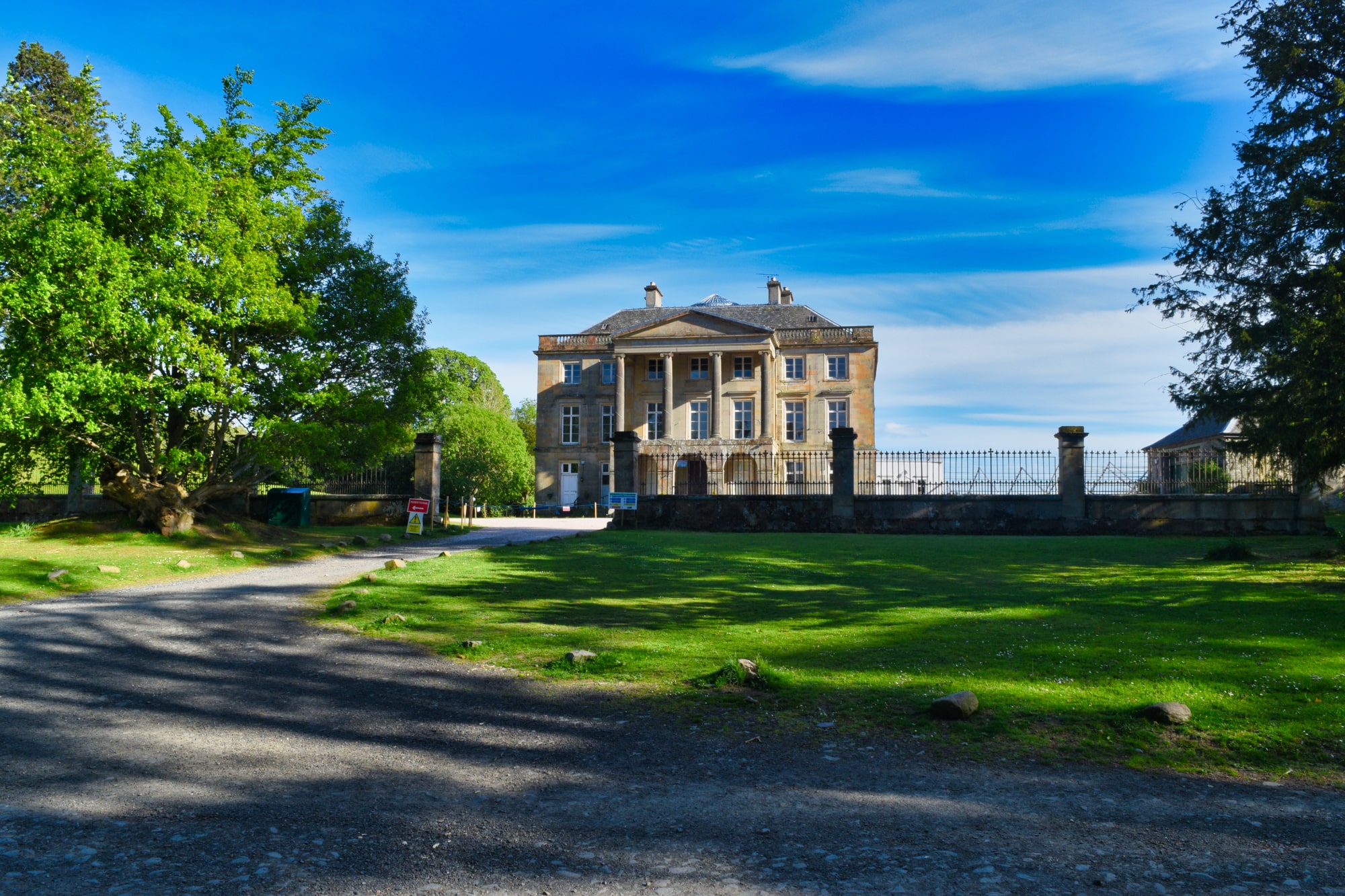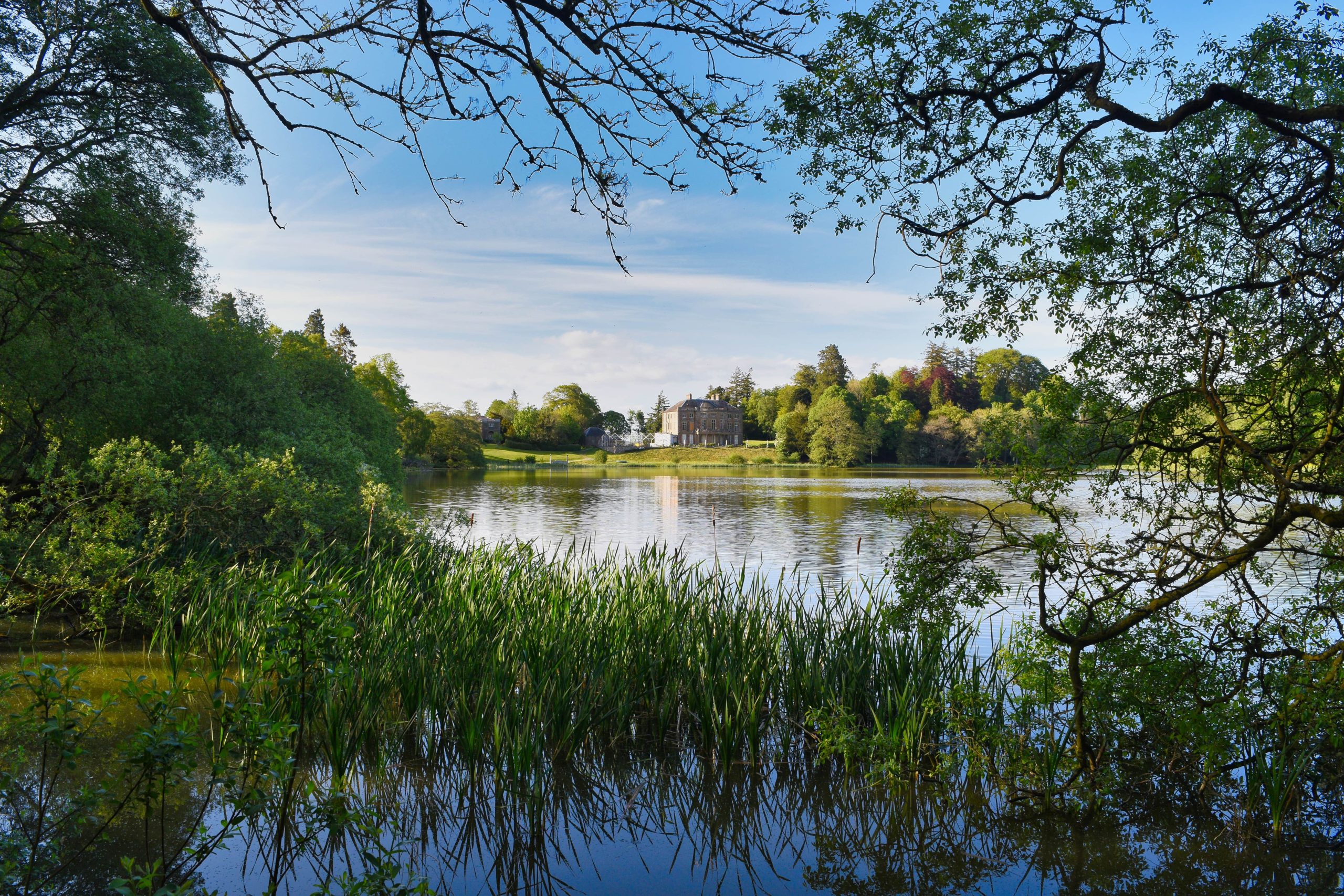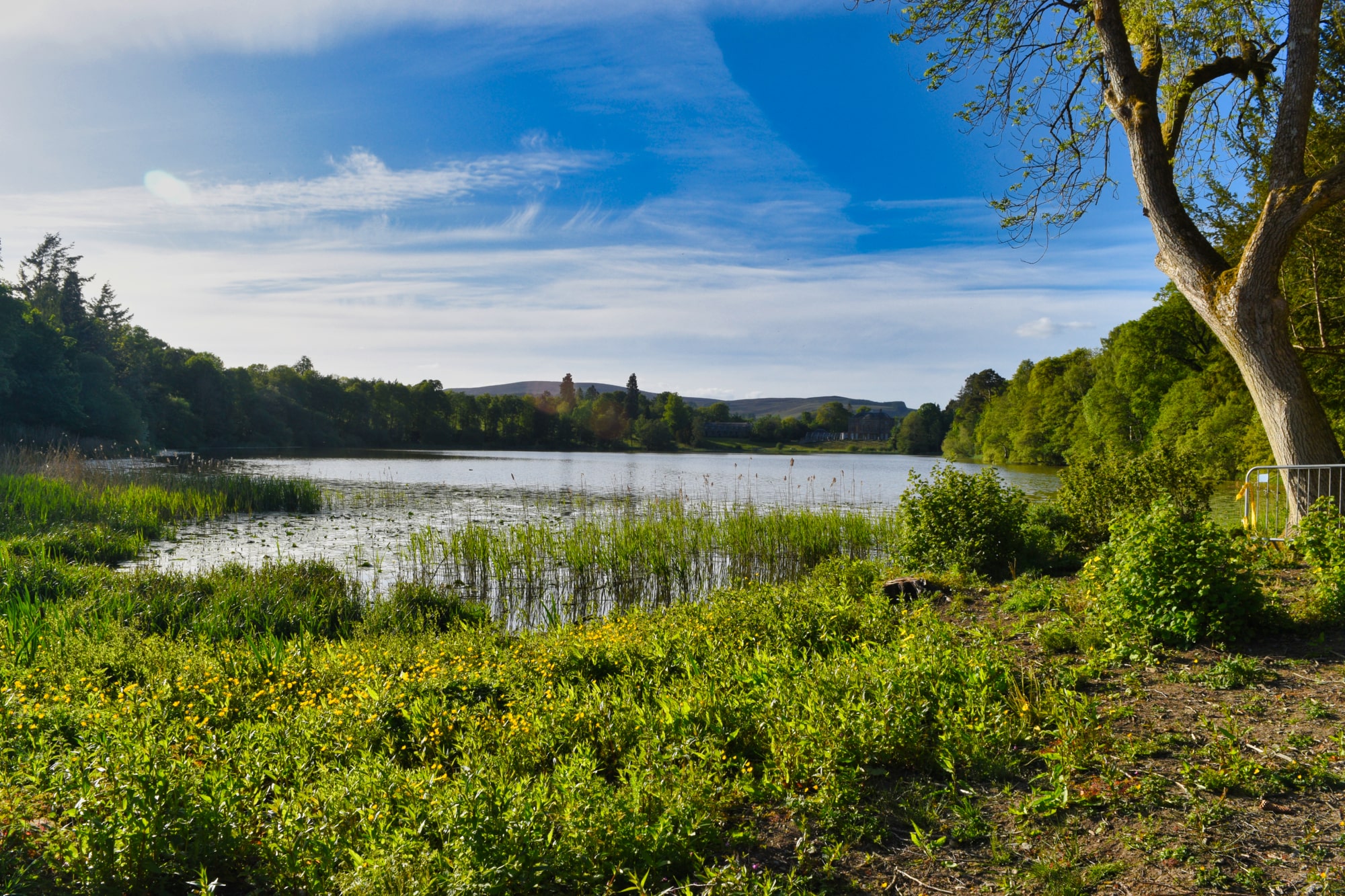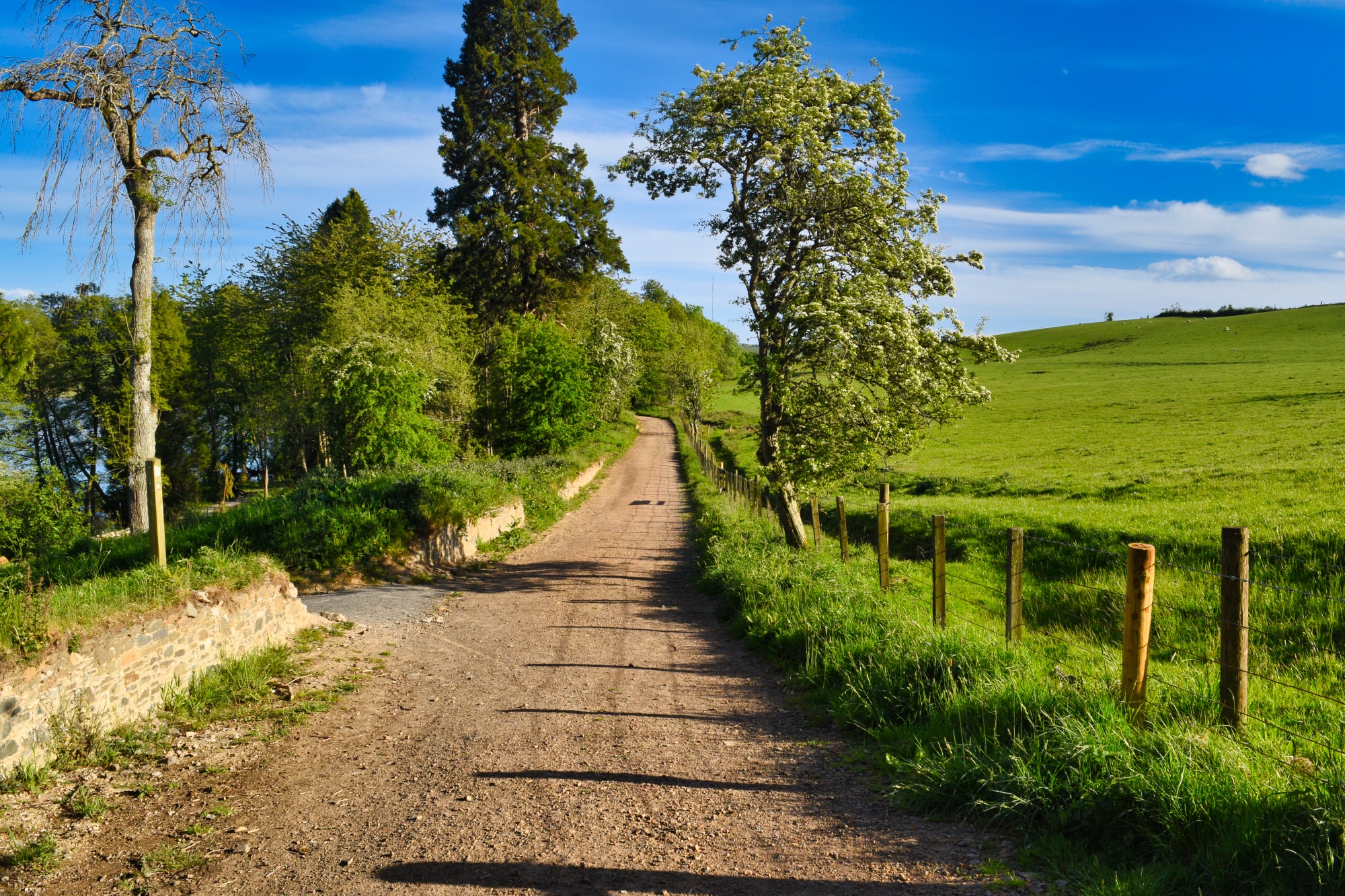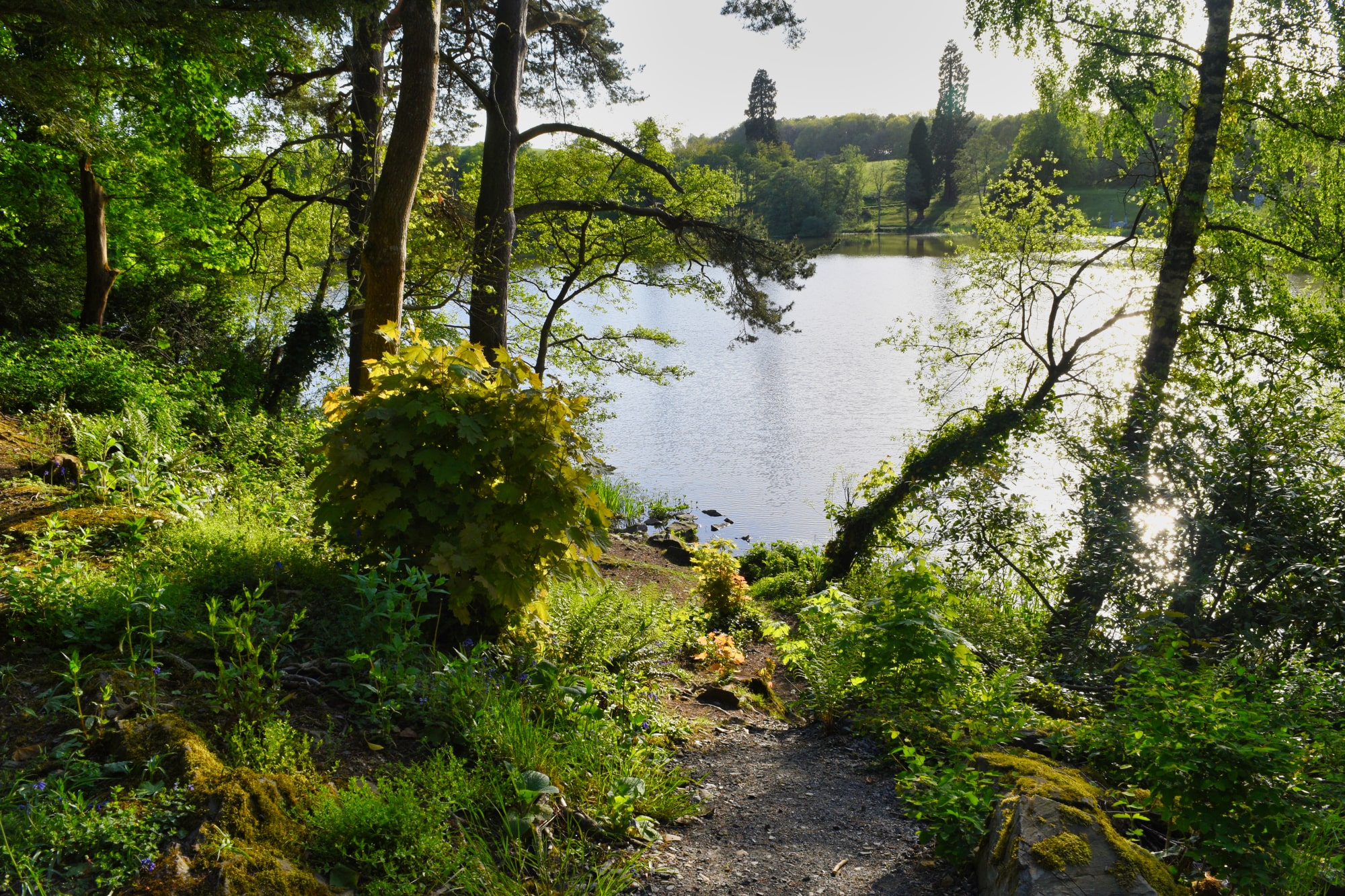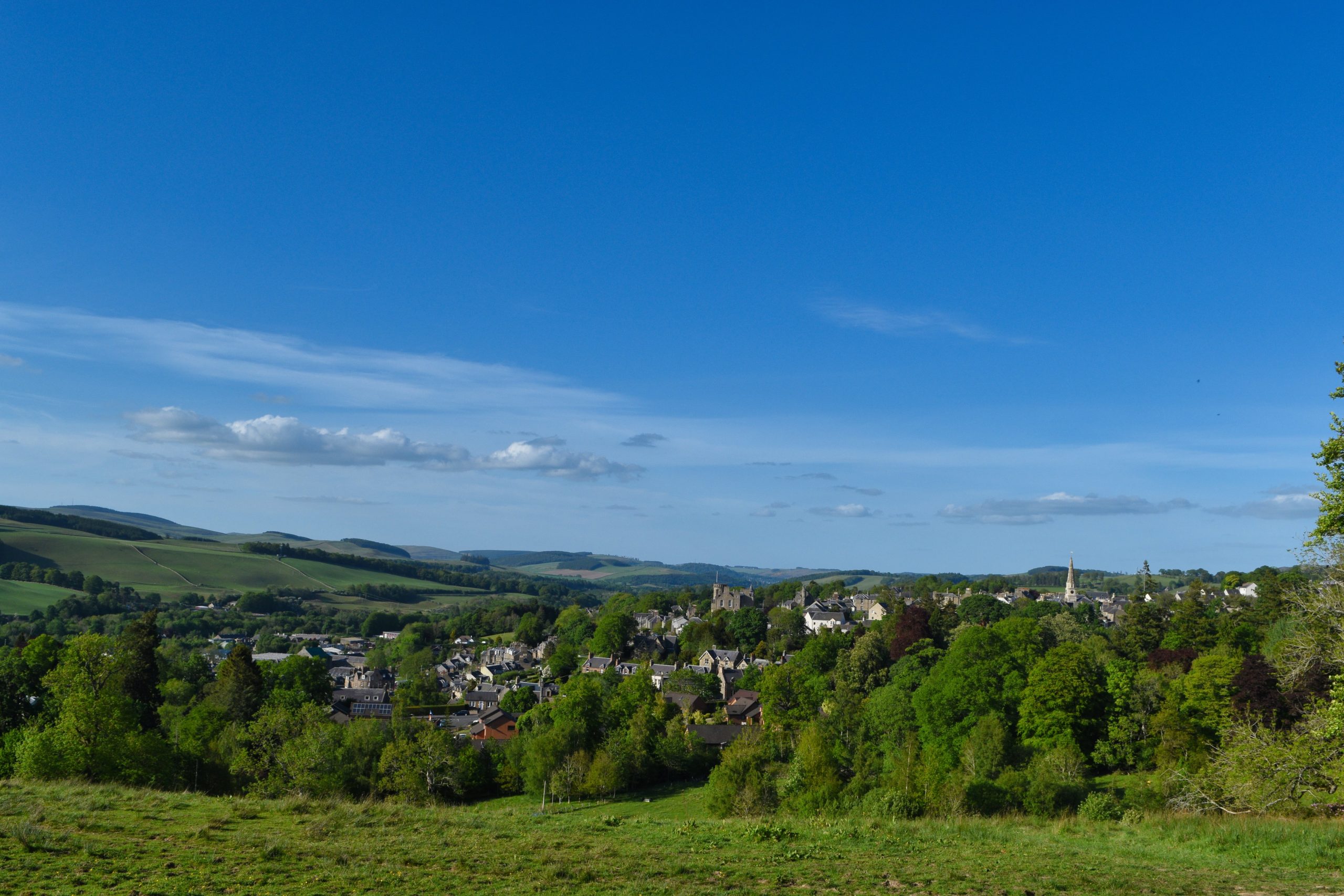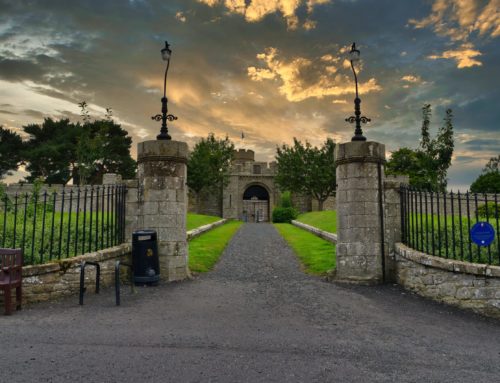The Haining
The Haining is a country house and estate in Selkirk in the Scottish Borders. The present house dates from the 1790s, and was a property of the Pringle family.
In 2009, the house and grounds were bequeathed to the people of Selkirkshire and the wider public. The Haining Charitable Trust is now working on developing the building as a centre for exhibitions and events, highlighting art, culture and history. The ground floor of the House has been refurbished and is now let out for various events and functions. The Old Coach House and Stable outbuildings have been refurbished and now offer six brand new artists studios. A two-bedroom holiday apartment, The Ettrick, is also now available within the grounds available for booking via Visit Scotland. The “Old Ginger” statue is located in the kennel yard.
The house is protected as a category A listed building, and the grounds are included in the Inventory of Gardens and Designed Landscapes in Scotland, the national listing of significant gardens.
History
A motte to the north-east of the present house is the site of Selkirk Castle, first recorded in 1119. It was rebuilt by Edward I of England in 1301, during the Wars of Scottish Independence, with Sir Alexander de Balliol of Cavers in command. It was taken by the Scots the following year, but recaptured by the English before 1311. By 1334 it had been demolished.
The Haining is recorded in the 15th century as a property of the Scott family. In 1625 Lawrence Scott sold it to Andrew Riddell, of Riddell, who built up the estate in the 17th century. In 1701 the estate was bought by Andrew Pringle of Clifton for his second son John Pringle, a lawyer. The “old” house may have been commissioned by John Pringle, or it may have already been in place when he arrived. The designed landscape was begun by John, and extended during the 18th and 19th centuries, with extensive tree planting, carried out.
In 1754 it was passed by Andrew Pringle’s older son to John Pringle, merchant in Madeira, a younger brother of Andrew. It was passed in 1792 to the merchant’s great-nephew Mark Pringle. In 1794, Mark began construction of a new classical-style house, adjacent to the older house on the north shore of the loch. This new building has been attributed to Kelso-based architect and builder William Elliot. Mark died in 1812 and around 1820, his son John Pringle, who had inherited, remodelled the new house with an Ionic portico and loggia, to designs by architect Archibald Elliot. Further extensions were planned to replace the old house, but these were never carried out. Marble statues were installed on the garden terrace at this time, and several estate buildings including the stables were erected. Capt. John Pringle kept a menagerie on the estate, including a bear, wolf and monkey, whose cages still stand.
On John’s death in 1831, the estate passed to his brother Robert, also a soldier, then their sister Margaret. Her daughter Anne Pringle-Pattison left The Haining to a relative, Andrew Seth (1856–1931), a philosopher at the University of Edinburgh, who subsequently took the name Pringle-Pattison. During these years the house was leased, until 1939, when the estate was split up and sold. The house was requisitioned by the military during the Second World War, and was occupied by Free Polish soldiers, including their mascot, Wojtek the bear. The adjoining old house burnt down in 1944, and was demolished in the late 1950s.
In 1959 The Haining was bought by Elina Pringle-Pattison, daughter of Andrew Seth Pringle-Pattison, and her husband Francis Nimmo-Smith.


